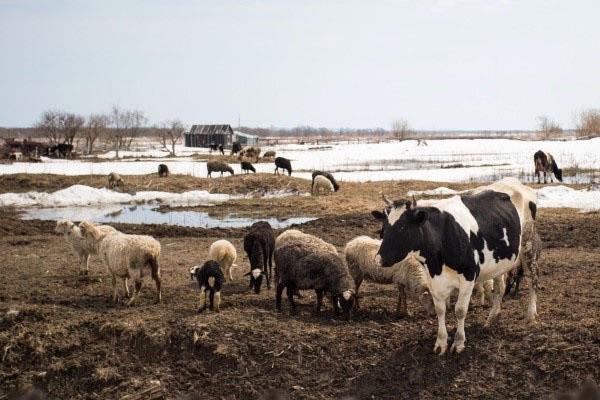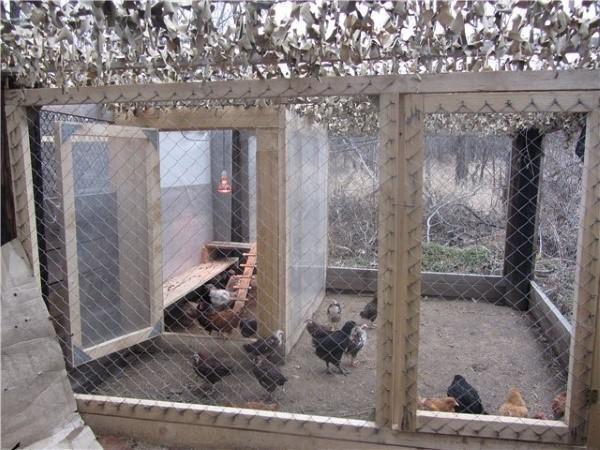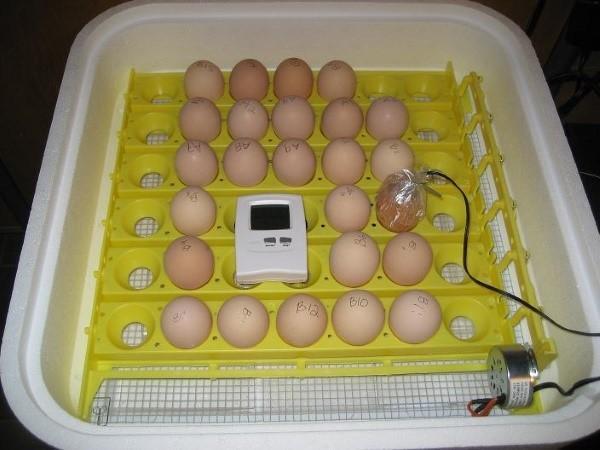What you need to do on the farm in March
 With the first rays of spring, not only summer residents strive to leave the premises and go out into the street, but also the animals and birds in their subsidiary plots. In this regard, hardworking owners, having sowed seedlings of garden crops and flowers and having carried out early pruning of the garden, go to the farm, because there is a lot of trouble in March and there.
With the first rays of spring, not only summer residents strive to leave the premises and go out into the street, but also the animals and birds in their subsidiary plots. In this regard, hardworking owners, having sowed seedlings of garden crops and flowers and having carried out early pruning of the garden, go to the farm, because there is a lot of trouble in March and there.
Moving birds to summer apartments

- ducks - in corrals;
- chickens and roosters - in summer enclosures.
Of course, in pens and open-air cages, you must first carry out a general cleaning, clearing them of debris. In addition, for chickens, one must not forget to put nests so as not to look for eggs anywhere. Although at first this will be the case, after all, during the winter the laying hens managed to lose the habit and forget their "place", but over time they will again start to organize laying clutches in the right place, previously allotted for this business.
In the northern regions, where temperatures are still below zero in March, and the snow does not even think to melt, the resettlement will have to wait until April.
It will also not hurt to check if there are enough feeders and drinkers for the poultry and if all the ones are intact. If necessary, repair what has leaked, or build additional feeders from available tools. The simplest option is to use the remnants of wooden boards:
- saw off or choose the desired length of the board;
- from each long edge, nail the side bars to it;
- install the plugs along the edges by nailing in short transverse bars:
- attach two transverse bars to the bottom to make the feeder more stable and less touching the floor.
That's all, the trough is ready. It remains to check whether the nails are sticking out so that the bird does not get hurt, and you can pour the grain.
Incubator bookmark: how to do it right
 Most owners strive to breed a bird on their own, because you can never be sure that purchased chickens absolutely healthy and everyone will survive, besides, poultry is usually much stronger. It is a great success if there are responsible mothers among chickens, ducks, geese or turkeys, who take on the responsibility of new offspring. However, they usually begin to incubate eggs much later, when it is quite warm outside, but early birdlings can be obtained using an incubator. In this regard, one of the main troubles in March at the farm is the collection of eggs for laying in incubator.
Most owners strive to breed a bird on their own, because you can never be sure that purchased chickens absolutely healthy and everyone will survive, besides, poultry is usually much stronger. It is a great success if there are responsible mothers among chickens, ducks, geese or turkeys, who take on the responsibility of new offspring. However, they usually begin to incubate eggs much later, when it is quite warm outside, but early birdlings can be obtained using an incubator. In this regard, one of the main troubles in March at the farm is the collection of eggs for laying in incubator.
In order to get the most positive result, or, in other words, so that chickens hatch from all the eggs, you need to responsibly approach this issue and select only eggs for laying that:
- have no defects (build-ups, spots, cracks in the shell);
- clean, with a minimum amount of dirt.
For incubation, only fresh eggs should be taken, which are no more than 4 days old.
The correct setting is equally important, especially if the eggs are of different sizes. When loading an incubator, you should adhere to certain rules:
- Lay eggs with the sharp top down.
- Lay out the largest copies first.
- After 4 hours, put medium-sized eggs on them.
- After the same period of time, lay out the rest, the smallest, eggs.
Observing these recommendations, even with eggs of different sizes, you can achieve offspring at the same time as possible.And one more secret: in order for hatching to occur during the daytime, bookmark chicken eggs in the incubator it is best to exercise in the evening, from about 5 to 7 pm.
Breeding the first offspring
 So, if the incubator was laid in early March, then already at the end of the month (after three weeks) the first addition of young animals, in particular chickens, can be expected, which means that there will be more for one more March care in the farm. But even in the southern regions at this time it is still too cold, so it is important to know how to leave the first offspring correctly and what conditions it needs.
So, if the incubator was laid in early March, then already at the end of the month (after three weeks) the first addition of young animals, in particular chickens, can be expected, which means that there will be more for one more March care in the farm. But even in the southern regions at this time it is still too cold, so it is important to know how to leave the first offspring correctly and what conditions it needs.
So, in short, after the chicken hatches and dries, it should be taken from the incubator and placed in a warm house. Ideally, it would be nice to put it under the hen, but in the month of March such a miracle rarely happens, except that the hens live in a warm chicken coop, so for the young you need to prepare a box or box with sufficiently high sides. Lay a warm mat on the bottom, it is good to put a heating pad for the first time. The ideal place for keeping chicks is the complete brooder.
It is also worth taking care of the lighting, because the first month it should be around the clock (by the second month of life, 10 hours are enough). As for the temperature of the content, the first week it is necessary to maintain about 30 degrees of heat, on the second it can be reduced to 27 degrees, and then every week it can be lowered by three degrees. Small chickens are fed only with special food, over time adding greens, cottage cheese, eggs to the diet.
March's chores at the farm is a pleasant bustle that will allow a summer resident who missed work over the winter to feel strength in his hands and pleasant fatigue after a hard day again. Getting ready for spring, because the season is just beginning and there are still many useful activities ahead!
Thanks for the interesting and useful information! I will take into account all the tips in this article!